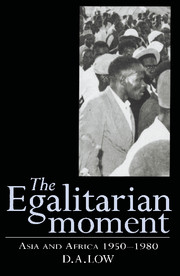Book contents
2 - Richer peasants and the state: East Africa, Papua New Guinea
Published online by Cambridge University Press: 12 October 2018
Summary
Those who speak about getting everything for nothing must mean that I should call out the Army and the police to seize by force a lot of land or buildings … which belongs to some of you
President Kenyatta if KenyaThe private capitalist farmer whether he has a large estate or a small farm has no place in socialist Tanzania
President Nyerere qfTanzaniaIF upon the abolition of large landlordism attempts were made during the third quarter of the twentieth century from the very top in countries like Egypt and India to create substantially egalitarian rural societies, which not only failed, but left the better-off peasantry in positions of considerable local and even national power, what of countries where there had not been large landlords?
To suggest something of an answer it is instructive to turn to the three East African countries of Uganda, Kenya and Tanzania, and to one in the south-west Pacific, Papua New Guinea, as well. Though in a few parts there had once been hereditary chiefs and rulers here, and in all four countries German, British and Australian colonial rulers had appointed administrative chiefs, there were - aside from a small number of white settlers - next to no large indigenous landlords in any of them. It would be quite erroneous, however, to believe that as a consequence essentially egalitarian rural regimes prevailed there. Once again some very rich field-work material from after mid century presents a very different picture.
In considering these countries it is always of first importance to remember that in them rural production for a formally monetised market was in many respects by the mid twentieth century rarely more than half a century old. To a much greater degree, moreover, than in a country like India, with its vast internal market, rural production was often principally linked here, as in many another Mrican, Caribbean and Latin American country (and again as a consequence of only relatively recent developments), with some very much wider world markets.
- Type
- Chapter
- Information
- The Egalitarian MomentAsia and Africa, 1950-1980, pp. 31 - 62Publisher: Cambridge University PressPrint publication year: 1995



